A Wining Cost Estimate
That Helps You To Win More Sewer Line Replacement Construction Projects

To consider various factors before estimating the cost of sewer line replacement with age of the sewer system, type of sewer system, length of the sewer line, depth of the sewer line, pipe material, root intrusion or blockages, and additional repairs required as solution.
The length of use of wastewater treatment infrastructure must be considered when estimating replacement costs. Age of a drainage system can affect efficiency and functioning. Corrosion, cracks, and disconnections are signs of aging and require attention.
A sewer system may need an upgrade if it is old or outdated. Inspection is needed to identify any defects and assess their severity. Regular maintenance can increase life span and reduce repair costs.
Other factors such as soil type, repairs, and pipeline material influence replacement costs. Soil type affects the alignment and formation of pipes during replacement. Corroded pipelines require additional excavation because they are fragile in weaker areas.
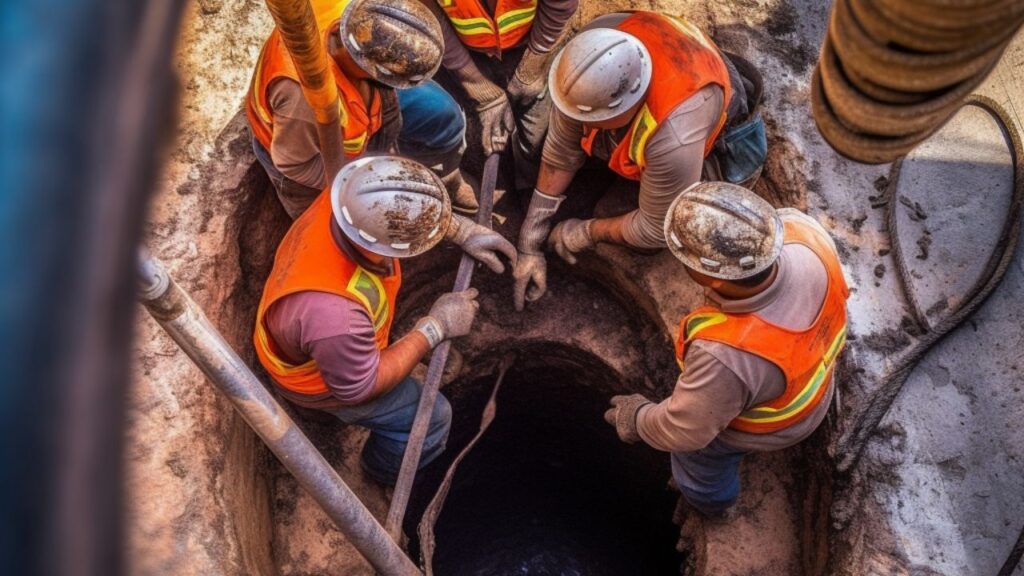
Recently, I saw a concrete sewage line that needed urgent attention after a sewer backup in my neighborhood street during heavy rains. Patch-up efforts were made instead of removing the deteriorated pipes, but the system got overwhelmed and there was an expensive overflow. Replacing the pipe earlier could have avoided this.
Remember: it is not only about what goes down the drain, but also what is inside the pipes.
Sewer Line Systems are key to keeping the environment safe. What type of Sewer System you have is essential when estimating Sewer Line Replacement costs.
Combined Sewer Systems collect both sanitary sewage and stormwater runoff in one pipe. Separate sewage systems have two pipes, one for each. Table 1 directly compares their features. The combined system needs more infrastructure, while the separate one costs less – it’s smaller.
When choosing between these two, consider environmental factors like wastewater treatment capacity, land availability, etc. Assess available resources according to your needs before deciding which system is best.
For accurate estimation of replacement costs, seek advice from professional plumbing contractors or engineers. Suggestions like regular maintenance and proper disposal of household waste can help prevent blockages or damage and lower costs over time.

The following table directly compares features of both sewer systems:
Type of Sewer System | Number of Pipes | Infrastructure Needed | Cost |
|---|---|---|---|
Combined Sewer Systems | One pipe for both sanitary sewage and stormwater runoff | Needs more infrastructure | Higher cost |
Separate Sewer Systems | Two pipes (one for sanitary sewage and one for stormwater runoff) | Smaller infrastructure needed | Lower cost |
When estimating the cost of replacing a sewer line, the distance from the home to the main sewer needs to be accurately measured. This is because longer lines require more materials and labor than shorter ones. Plus, obstacles such as trees, sidewalks, driveways or other obstructions can lead to unexpected costs & delays if not taken into account.
Inspecting the existing infrastructure is also important. Old pipes may have corrosion or cracks, leading to frequent repairs. Modern PVC pipelines are cheaper and more durable.
It’s best to consult a licensed plumber or contractor for an accurate estimate as they have the tools & expertise required.
Remember: Sewer line replacement requires factoring in depth too!
Location and depth are crucial for estimating the cost of replacing a sewer line. If it’s deep underground, more excavation will be needed, making it more expensive. The depth determines the type of equipment needed for digging up the soil, which affects project timelines and budgets.
Hard rocks or tree roots in the area can lead to extra expenses. Digging is harder in rocky terrain, which poses a challenge to the crews. Local regulations for disposing of waste material from old pipes must be followed or fines could occur.
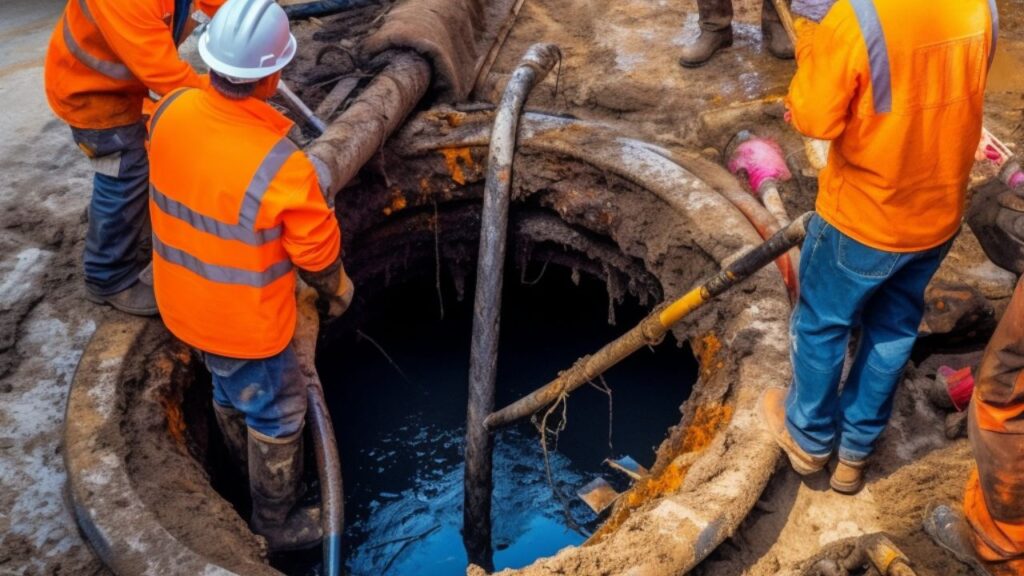
A homeowner in a city had an old sewer pipe. The plumber offered various repair options based on the pipe’s depth and condition. Replacing entire portions may be necessary and cost-effective in areas with easy digging. However, when excavation takes longer due to rocky terrain or tree roots, costs rise. Choosing the right pipe material is like choosing the right outfit – it can make or break the experience.
Choosing the perfect pipe material for your project requires careful consideration. Consult a professional to determine the most important factor. The following table provides a comparison of pipe materials:
Pipe Material | Cost (Per Linear Foot) | Lifespan (Years) | Resistance to Corrosion | Ease of Installation |
|---|---|---|---|---|
Polyvinyl Chloride (PVC) | $10-$20 | 100+ years | High resistance to corrosion | Easy installation and low maintenance |
Acrylonitrile Butadiene Styrene (ABS) | $15-$30 | 50-100 years | Moderately resistant to corrosion, prone to brittleness when exposed to sun or heat. | Average difficulty in installation, prone to buckling if improperly installed |
Cast Iron | $25-$75 | 80-100+ years | Highly resistant to rust and corrosion | Difficult installation due to weight and time-consuming pipe replacement process |
PVC is cost-effective and easy to install, while cast iron is a great choice for heavy-duty plumbing projects due to its greater longevity against harsh elements. ABS offers a balance between cost and durability. Professional advice is key to choosing the best pipe material that meets your needs and budget.
Corroding roots in your sewer line? Avoid it like a jealous ex!

Before estimating cost of replacing a sewer line, consider potential vegetation growth or blockages. These could be caused by root intrusion or other obstructions, disrupting sewage flow and causing backups.
First, remove vegetation or obstructions which are interfering with the line. Repair damage from roots or intrusions. Depending on severity, repairs may require more extensive replacement of affected section.
Minimize future maintenance costs and prevent further damage. Install barriers or use chemicals to deter root growth. Don’t plant trees or shrubs near your sewer lines.
Think about these factors before estimating costs and developing a plan for addressing issues with root intrusion or blockages.
Conducting sewer line replacements requires considering possible extra repairs. These could be needed when accessing or installing new pipes. Collapsed pipes, weakened joints, and damage to the surrounding structure from excavation could all be encountered. Planning for such possibilities is essential to avoid unexpected expenses and delays.
Precaution is key when excavating to reduce the probability of extra damage. Experienced professionals can offer insight into potential problems and eliminate unpleasant surprises.
Angi.com reports that 1/3 of homeowners needing sewer line replacements had additional damage needing repair beyond the initial quote. Estimating cost is like a game of darts with an underground target – the consequences of missing are messy!
To accurately determine the cost of replacing a sewer line, you need to be equipped with different methods of estimation. This section provides you with a comprehensive guide to estimating sewer line replacement cost through camera inspection, traditional excavation, and trenchless technologies. Additionally, we will compare the costs of different methods to help you make the most cost-effective choice.
A specialized device is key when estimating costs for sewer line replacement. By inspecting and viewing any damage, the technician can plan the repairs. This also gives the technician a better view of inaccessible problems.
Camera inspections are a great way to get accurate info on pipeline damage. They detect blockages, cracks, corrosion, root intrusion, etc. Detecting these issues early helps to reduce expenses and time wasted.
However, there are some limitations. For instance, if many angles need to be looked at or long pipes with bends, more services may be required. Nonetheless, most technicians agree that camera inspections are one of the best methods for collecting info about pipeline maintenance.

It might surprise you how many people have had blocked drains, paying for fixes that could have been avoided with an inspection. This data could save them time and money in the long run.
Sewer line replacement doesn’t need to be done the old-fashioned way – destroying yards and disrupting neighborhoods!
Digging up the ground to replace sewer lines has been used for years. This method, called excavation, means digging through layers of dirt and rock to access the pipes. It’s a traditional way to replace worn-out or damaged sewer systems.
Today, excavation tech has improved. Heavy machines like backhoes and bulldozers dig trenches along streets, sidewalks, and private property. Concrete pavement and landscaping features may be removed to reach the pipes.
The downside: excavation can be expensive. Labor and material costs add up, plus there’s no telling when the project might be disrupted. In some cases, excavation is unavoidable.
Alternative strategies have been developed. Using CCTV cameras, companies can inspect drains without digging. It saves demolition and deep cleaning steps.
Organizations should inform residential owners about work progress. This keeps disruptions to a minimum, and everyone knows what to expect.

Non-Excavation Methods for Sewer Line Replacement – Trenchless technologies are a great way to replace or repair your sewer lines without digging.
CIPP, pipe bursting, and pipe lining are some of the methods you can use, each with their own benefits. CIPP offers a faster installation with less disruption to traffic and the community. Pipe bursting is less invasive and saves time, while pipe lining requires no digging and is more durable.
Slip lining and directional drilling are also options. They are more durable and can be installed faster.
When estimating replacement costs, consider a trenchless technology. It could save you money. But don’t get your hopes up too high – it’s still gonna cost you plenty!
Estimating costs for replacing sewer lines requires various methods. Analyzing costs is a must for any project.
We made a table with four columns: Method, Materials Cost, Labor Cost, and Total Cost. We looked into common sewer line replacement methods like pipe bursting, CIPP, and traditional excavation. The total cost for all three methods were quite similar.
Besides the usual methods, some cities offer trenchless rehabilitation for free. It can be quite beneficial as it’s a cost-effective solution for contractors.
Research shows many cities in the U.S. replaced their aging sewers with traditional excavation in the 20th century. Technology has improved since then, leading to more durable sewers and trenchless modern-day alternatives. Both homeowners and contractors prefer these.
Your wallet may suffer after hearing the typical cost ranges for sewer line replacement.
Maximize your sewer line replacement construction business’s potential with our competitive financing options

To estimate the cost of sewer line replacement with the sub-sections of cost range for traditional excavation, cost range for trenchless technologies, cost differences for repairs vs. full replacement, and average national costs vs. local costs as a solution, understanding typical cost ranges is essential. This section will give you an idea of the various cost ranges associated with sewer line replacement, allowing you to estimate the costs and make an informed decision based on your budget and needs.
Those wanting to switch up their sewer line through traditional excavation should know the typical cost range. Here’s a handy table to give you a starting point:
Length of Sewer Line (ft) | Estimated Cost Range |
|---|---|
Up to 50 | $3,000 – $6,000 |
50-100 | $4,000 – $8,000 |
100-150 | $5,500 – $13,000 |
150-200 | $7,000 – $18,000 |
More than 200 | Custom Quote Required |
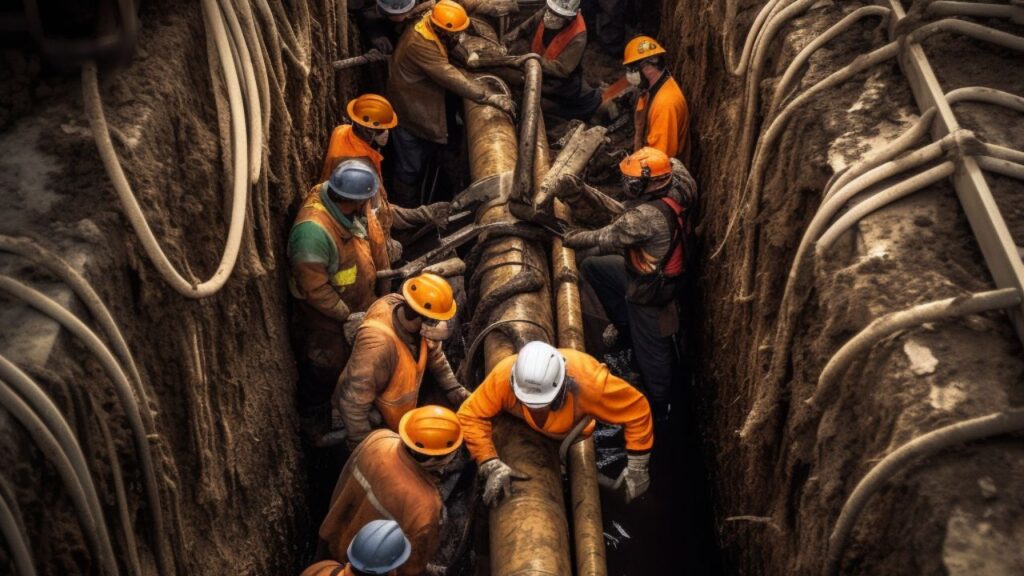
Keep in mind, these figures can be different based on location and complexity. To save money, there’s always the option to go trenchless. A contractor can figure out what works best for your unique situation.
Pro Tip: Do regular maintenance checks to dodge more expensive replacements later. Who knew saving cash could be as easy as going through a hole?
Trenchless tech is a cost-efficient way to repair or replace damaged sewer pipes. Here’s a look at the costs for each method:
Trenchless technology is a great choice in areas with costly or hard-to-reach excavation. Each method has its own advantages and limitations. For example, CIPP might not be suitable for large pipes, and pipe bursting can cause soil disruption. One customer saved about 50% on their sewer line replacement costs by using trenchless tech instead of traditional methods. So, if you’re considering repairs or full replacement for your sewer line, bear in mind: patching it up now may lead to a big mess later.
When it comes to sewer line repairs and replacements, there’s a big difference in cost. Repairs are cheaper, but can cause future issues. Replacing the entire line is more expensive, but will guarantee your plumbing system works for a long time. Check out the average cost ranges below:
Average Cost Range | |
|---|---|
Repairs | $300 – $4,000 |
Replacements | $3,000 – $10,000 |
The price you pay may be higher than the average. Access to the pipes and materials used can change the cost. Get an expert plumber to assess the situation before making a decision.
Pro Tip: Remember that repairs may seem cheaper at first, but may end up costing more in the long run if problems occur.

When evaluating sewer line replacement costs, you may find that Average National Costs and Local Costs differ significantly. Several things influence the price, such as location, pipeline length, material used, and project complexity. You can see estimated costs in the table below.
Zip Code | Average National Cost | Local Cost Range |
|---|---|---|
90210 | $4,000-$13,000 | $6,000-$18,000 |
60614 | $3,500-$10,500 | $5,300-$15,500 |
33139 | $4,200-$12,600 | $6,100-$17,600 |
It’s important to remember that these are average national costs, which can change due to factors such as material availability or labor cost variation. Moreover, it’s essential to hire a reputable contractor who knows the environmental and safety regulations in your region when replacing a sewer. For example, a homeowner in San Francisco was stunned when they were given a $28k quote for their sewer replacement. However, they asked their neighbors for contractor recommendations and found one that did the job for under $7k. This shows how research and negotiation can help avoid overspending on pipe repairs or replacement. If only there was a sewer genie to make your budget wishes come true!
To estimate the cost of replacing your sewer line, you need to consider the factors that can impact the total price. In order to help you with that, the section on “Factors That Can Affect the Total Cost of Sewer Line Replacement” with sub-sections such as local permitting requirements, labor costs for the region, time of year and weather conditions, additional repairs or line upgrades, and financing or payment options is presented as a solution.
Sewer line replacement can be pricey. One factor that affects the cost is local licensing protocol. Every region has its own rules to follow. This includes fees, paperwork, and inspections. Not following the rules could result in penalties or legal actions.
Hiring experienced professionals for permits is best. They’ll know the protocols and safety codes. This means less hassle and smoother coordination.
Sometimes extra permits are needed for excavation work. Like an encroachment permit if you’re digging up an alley or sidewalk near your property.
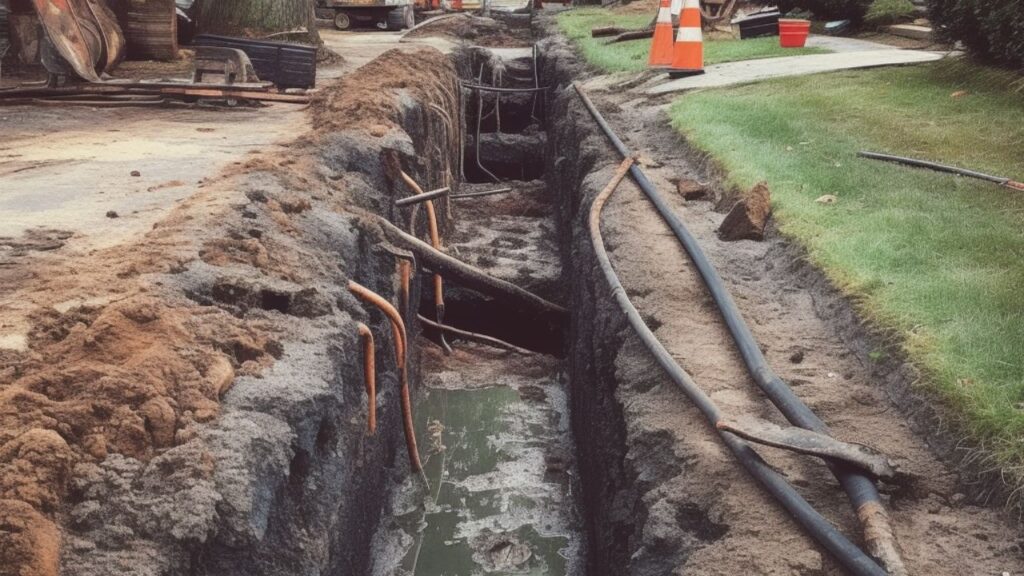
Homeadvisor.com surveyed 4,869 projects nationally and found that “the average cost typically ranges from $2,500-$7,500.” So, replacing your sewer line will cost ya!
When thinking about the price of a sewer line replacement, labor expenses are an essential factor. The labor rate depends on the region. Here’s a summary of the typical labor costs for sewer line replacements across different regions:
Region | Hourly Rate |
|---|---|
Northeast | $70 – $100 |
Midwest | $60 – $90 |
South | $50 – $80 |
West Coast | $80 – $120 |
Remember, these amounts are averages and might change depending on the difficulty of your project, extra services needed, and your distance from the city center.
It’s important to take into account that there are many aspects that affect the total cost of replacing a sewer line. Labor costs are one of them. Other things to consider are material costs, equipment usage fees, authorizations, and the size and depth of the line.
Pro Tip: To guarantee precise pricing estimates for your case, it’s always best to collaborate with reliable and reputable plumbing professionals with a successful history of offering quality service at reasonable prices. Don’t let Mother Nature shock you when it comes to sewer line replacement costs!
Timing and the environment can affect how much it costs to replace a sewer line. Temperature, wind, and rain all affect the process. Hotter temps can increase drying times, causing the project to take longer. Heavy rain could even make it impossible to access the site. That kind of unpredictability adds variation to pricing.
A town in New Hampshire dealt with flooding during sewage maintenance tasks. This led to delays, extra cost, and disruption for residents and business owners.
Sewer line replacement: an excuse to upgrade your plumbing system!

Additional repairs or upgrades to a sewer line can significantly influence the cost of replacement. This includes fixing broken pipes, adding new connections, and updating out-of-date systems. It all depends on the size of the property, its location, and the condition of the sewer lines.
Complexity of extra repairs or line upgrades can also increase expenses due to extra labor and materials needed for the excavation and installation. For instance, older homes with cast iron pipes may need more extensive replacement than newer homes with PVC pipes. Professional assessments and inspections are essential for deciding which repairs are required.
A careful inspection might uncover other problems like tree root intrusion or ground shifting around pipes. This will add to costs if left unresolved. Keeping up-to-date with regular cleaning can avoid blockages, backups, and minimize future damage-related costs.
To keep costs low, homeowners should think about replacing old plumbing fixtures with newer models that save water. This means fewer clogs and backups.
When considering ways to pay for sewer line replacement, there are various options. Here are a few alternatives to think about:
Remember that some payment methods may incur extra fees or increase the total price. Also, certain types of financing may require good credit or collateral.
Homeowner’s insurance policies do not usually cover damage caused by sources within your control. So, make sure your policy includes sewer backup coverage.
Often, people prefer to make monthly payments instead of paying everything upfront. However, monthly payments may increase the cost after the estimated time exceeds years. Choose an affordable plan with perfect payment schedules.
According to Home Advisor, replacing a sewer line typically costs between $2,554 – $7,811. This can vary depending on factors like pipe materials, accessibility issues, and extra repairs required due to excavation damage. Be prepared to do some financial calculations as predicting the cost of sewer line replacement is like solving a financial Sudoku puzzle.
To estimate the cost of sewer line replacement with this step-by-step guide, gather information about the sewer system and property. Obtain quotes from contractors to compare the price and quality of work available. Finally, finalize the estimate and plan for financing to ensure a comprehensive cost estimate.
Before you start costing a sewer line replacement project, you need to know some key info.
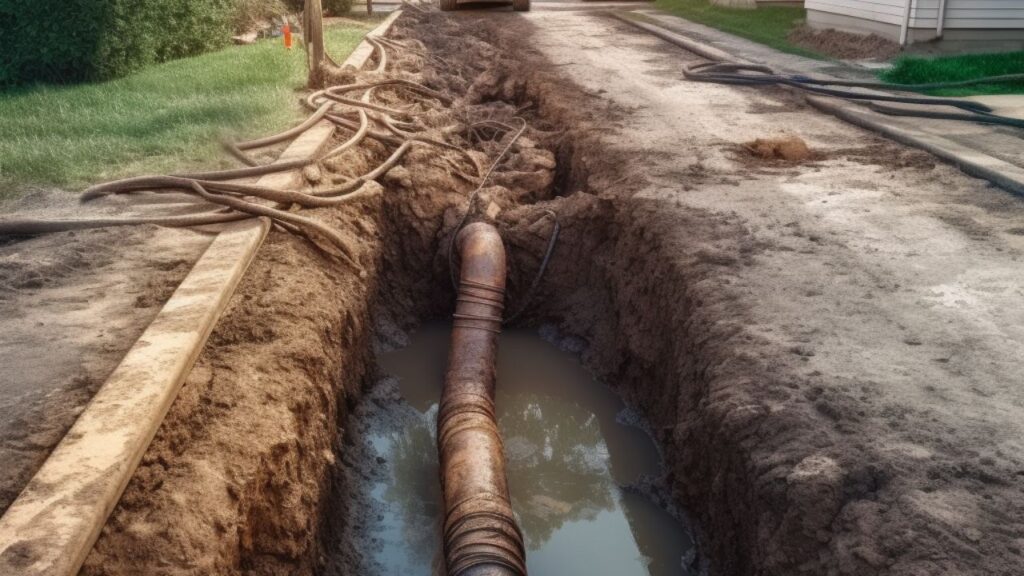
This includes the age of the sewer system, length, and configuration. Plus, you have to look at property ownership records to find out who is responsible.
You must also consider the flow rate, and check for any visible blockages in or outside the property. You also have to look at access points and materials.
It’s important to take into account risks and hazards, such as waste water volume and expected load levels. These can require specialized safety gear, permits, and equipment rentals.
If you don’t gather enough information, your pricing estimates could be wrong. This can lead to time loss and customer dissatisfaction due to rising costs. A resident was charged tens of thousands after their basement backed up due to an over-the-phone contractor estimate. It is best practice to visit the property to get all the necessary details first.
Before you start costing a sewer line replacement project, you need to know some key info. This includes the age of the sewer system, length, and configuration. Plus, you have to look at property ownership records to find out who is responsible.
You must also consider the flow rate, and check for any visible blockages in or outside the property. You also have to look at access points and materials.
It’s important to take into account risks and hazards, such as waste water volume and expected load levels. These can require specialized safety gear, permits, and equipment rentals.
If you don’t gather enough information, your pricing estimates could be wrong. This can lead to time loss and customer dissatisfaction due to rising costs. A resident was charged tens of thousands after their basement backed up due to an over-the-phone contractor estimate. It is best practice to visit the property to get all the necessary details first.

To get a cost estimate for replacing sewer lines, specialists are key. Here’s how to get a quote from contractors:
Remember, every contractor has different charges and methods. So, expect different quotes for the same job. Selecting the best contractor means doing research and evaluation.
Sewer line replacement is costly and needs careful planning. Someone heard a story of an individual who didn’t plan properly. They went ahead with the work and ended up needing further corrections, costing more money! Choose well – you don’t want a fancy and expensive trench that still stinks!
It’s essential to compare the options for sewer line replacement. We’ve got a table to make it easier. It includes the name of the service provider, price, ratings, and reviews.
Check for any unique details they offer. Maybe a guarantee or emergency service.
Don’t miss out on finding the best deal! Compare the price and quality of work amongst providers. Prepared to pay up, replacing a sewer line isn’t cheap!
Calculating the cost of sewer line replacement is a must before beginning the project. You also need to know how to finance it. Here’s how to finalize the estimate and plan your financing in 3 easy steps:
Take into account repayment terms and interest rates when picking a financing option. Don’t forget that not fixing the sewer line can cause long-term harm and bigger drainage system issues later.
Pro Tip: Check local authorities for regulations that might affect pricing estimates.
The cost of sewer line replacement can be affected by a number of factors, including the length of the line, the condition of the existing line, the accessibility of the line, and the complexity of the replacement.
Signs that your sewer line may need to be replaced include slow draining sinks or toilets, gurgling sounds from drains, and foul odors in your yard or home.
The length of time it takes to replace a sewer line can vary depending on the complexity of the replacement, but it can typically take anywhere from a few days to a couple of weeks.
In some cases, minor repairs may be an option. However, if the line is severely damaged or outdated, replacement is often the most cost-effective and long-term solution.
Yes, permits are typically required for sewer line replacement. Your contractor should be able to obtain all necessary permits for the job.
When choosing a contractor for sewer line replacement, be sure to ask for references, look for a licensed and insured professional, and get multiple quotes before making a decision.
Here I am going to share some steps to get your sewer line replacement construction cost estimate report.
You can send us your plan on info@estimatorflorida.com
Before starting your project, we send you a quote for your service. That quote will have detailed information about your project. Here you will get information about the size, difficulty, complexity and bid date when determining pricing.
We do sewer line replacement construction cost estimating and prepare a detailed report for your project. At last, you finalize the report and finish the project.
561-530-2845
info@estimatorflorida.com
Address
5245 Wiles Rd Apt 3-102 St. Pete Beach, FL 33073 United States
561-530-2845
info@estimatorflorida.com
Address
5245 Wiles Rd Apt 3-102 St. Pete Beach, FL 33073 United States
All copyright © Reserved | Designed By V Marketing Media | Disclaimer
IMPORTANT: Make sure the email and cell phone number you enter are correct. We will email and text you a link to get started.
By clicking “I Agree” above you give Estimate Florida Consultin express written consent to deliver or cause to be delivered calls and messages to you by email, telephone, pre-recorded message, autodialer, and text. Message and data rates may apply. You are able to opt-out at any time. You can text STOP to cancel future text messages.